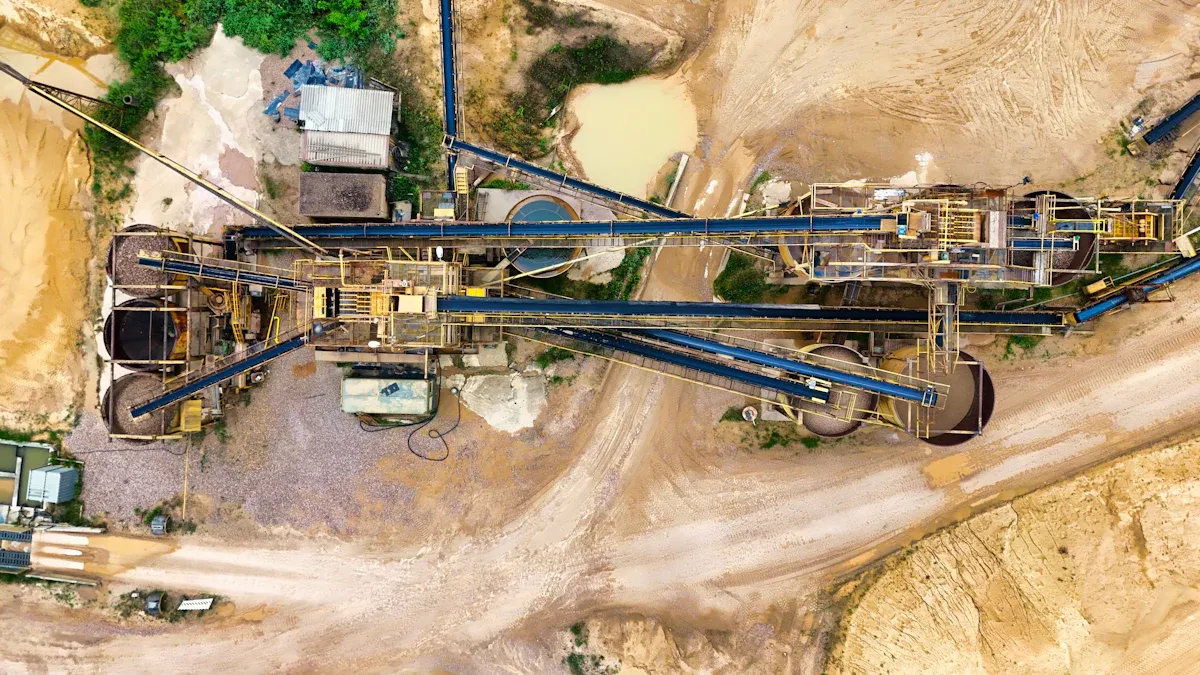
Selecting the right jaw crusher parts for a jaw crusher machine can make a huge difference in daily operations. Advanced manganese steel casting and wear-resistant liners help lower replacement rates, while innovations like IoT and automation cut downtime. The table below shows how these crusher parts drive higher ROI:
| Aspect | Impact on Downtime and Maintenance Costs |
|---|---|
| Manganese Steel Casting | Extends part lifespan, reduces replacements |
| Crusher Rotor | Advanced designs boost efficiency and durability |
| Automation & Monitoring | Lowers downtime through real-time tracking and control |
Key Takeaways
- Choosing high-quality jaw crusher parts made from durable materials like manganese steel greatly extends equipment life, reduces maintenance costs, and boosts productivity by up to 30%.
- Precision-engineered parts with a perfect fit lower energy use by up to 30%, increase wear life by 2 to 4 times, and ensure smoother, more reliable crushing operations.
- Matching parts to your crusher model and the material being processed cuts downtime, improves throughput by up to 25%, and leads to significant cost savings and longer maintenance intervals.
Key Drivers of ROI: Choosing the Right Jaw Crusher Parts
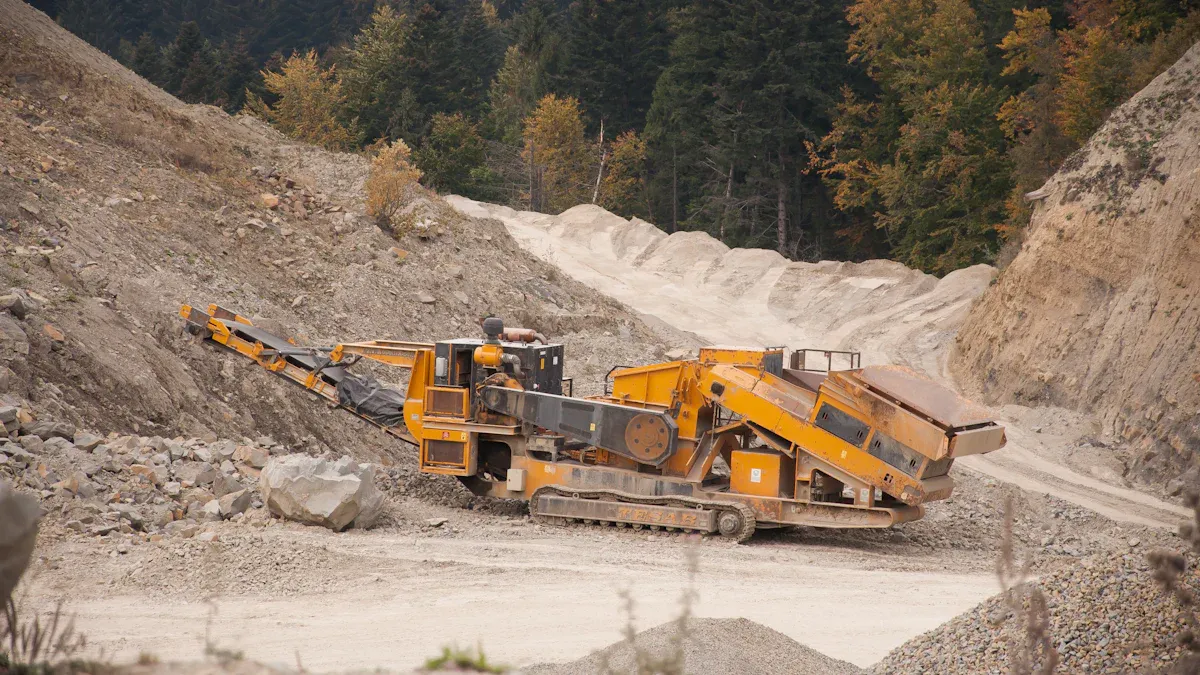
Material Quality and Durability
When companies look for ways to boost their return on investment, they often start with the basics: the materials that make up their jaw crusher parts. The right materials can make a huge difference in how long these parts last and how much they cost over time. Common materials include carbide-reinforced steels, austenitic manganese steel, and low alloy steel. Field and lab tests show that parts made from high-manganese steel, like Mn13Cr2 and Mn18Cr2, stand up well to tough jobs. These steels can handle hard rocks and keep working even when the pressure is high.
Tests such as the Planar Array Field Wear Test reveal that wear rates drop as the hardness of the material goes up. Some austenitic steels even get tougher the more they work, thanks to a process called work hardening. For example, a mining company switched to more durable jaw plates and saw maintenance costs drop by 30%. They also cut downtime by 40 hours each month and doubled the lifespan of their jaw plates. These changes led to fewer replacements, less labor, and more reliable machines.
Tip: Choosing high-quality jaw crusher parts can extend equipment life from 8,000 hours to over 25,000 hours, reduce maintenance costs by up to 90%, and boost productivity by as much as 30%.
Engineering Design and Precision Fit
The design of jaw crusher parts matters just as much as the material. Well-designed parts fit together perfectly, which means less energy wasted and more consistent results. For example, liners with a precision fit can cut energy use by up to 30%. They also last two to four times longer, which means fewer stops for repairs and less money spent on replacements.
Modern jaw crusher parts often include smart features like ultrasonic sensors. These sensors help control vibration and feed rate, which keeps the crusher from getting overloaded. Some machines use electromagnetic bars to remove iron particles, cutting down on forced stops and extra maintenance. When engineers reinforce the movable jaw plate, they make it lighter and stronger at the same time. This not only saves energy but also helps the crusher last longer.
A table can help show the benefits of precision fit:
| Benefit | Impact on Operations |
|---|---|
| Reduced Energy Consumption | Up to 30% lower costs per ton |
| Longer Wear Part Life | 2-4x longer lifespan |
| Consistent Material Flow | More stable crushing output |
| Less Vibration | Fewer breakdowns and smoother runs |
Note: Precision engineering also makes installation faster and easier. When parts fit just right, crews spend less time making adjustments and more time crushing rock.
Compatibility and Application Matching
Not all jaw crusher parts work with every machine or every job. Compatibility is key. Companies need to check part dimensions, material specs, and design features to make sure everything matches their crusher model. OEM parts are made to fit perfectly, while aftermarket parts might need extra checks to ensure a good fit.
Matching parts to the job is just as important. Crushing hard, abrasive rocks like chert or limestone calls for tougher, wear-resistant parts. For softer materials, a different setup might work better. Adjusting settings like the closed side setting (CSS), speed, and stroke can also help get the best results for each application.
Here are some steps to make sure parts match both the crusher and the job:
- Check the crusher’s manual or talk to the manufacturer to confirm compatibility.
- Choose parts based on the type of material being crushed.
- Match parts to the crusher’s size, capacity, and operational needs.
- Consider custom or modular parts for unique jobs or tough conditions.
- Replace wear parts like liners and jaw plates before they are fully worn out to avoid downtime.
A recent example shows that using application-matched jaw crusher parts can boost throughput by 25%, extend maintenance intervals by 30%, and cut downtime by nearly 40%. This means more rock crushed, less time fixing machines, and better product quality.
Real-World ROI Gains from Optimized Jaw Crusher Parts
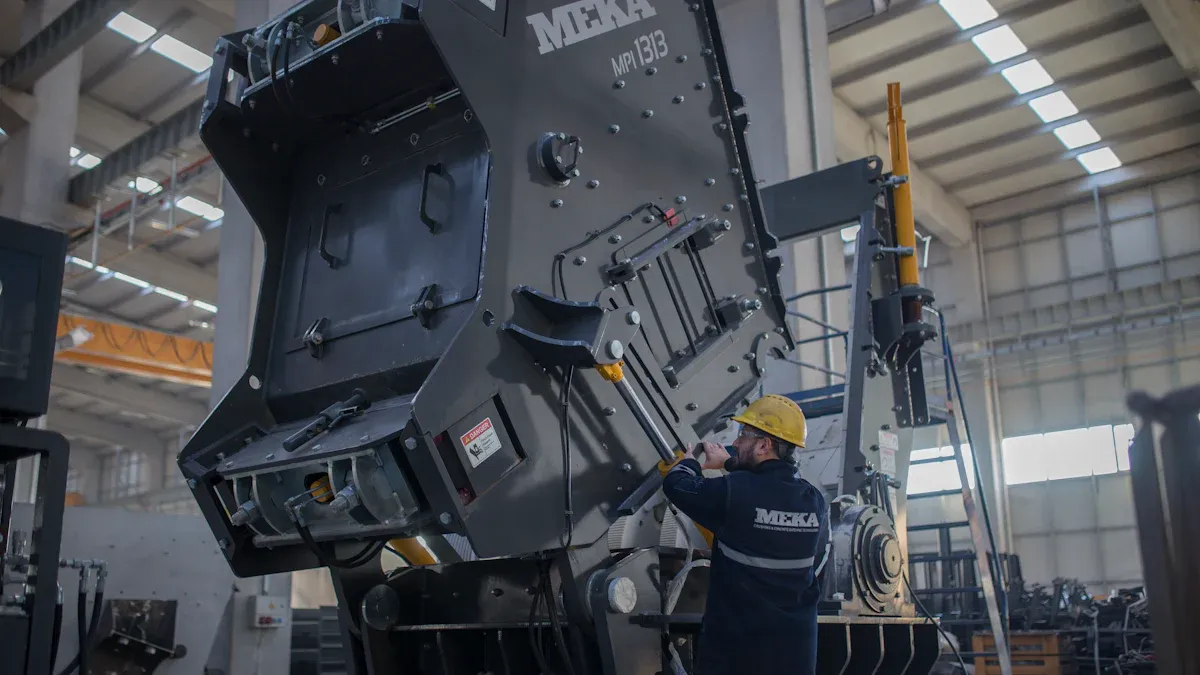
Case Studies: Cost Savings and Productivity Increases
Companies across different industries have seen big improvements after switching to advanced jaw crusher parts. These upgrades help solve common problems like equipment wear, downtime, and inconsistent material quality. The table below shows how different sectors benefit from new innovations:
| Application | Challenge | Innovation Type | Productivity Increase (%) |
|---|---|---|---|
| Mineral Processing | Equipment wear and tear | Wear-resistant materials | 15% |
| Construction Aggregates | Operational downtime | Automatic monitoring systems | 20% |
| Mining Logistics | Material handling inefficiencies | Integrated crushing solutions | 25% |
| Environment Management | Dust and noise pollution | Noise-reduction technologies | 10% |
| Material Crushing | Inconsistent material quality | Smart technology integration | 18% |
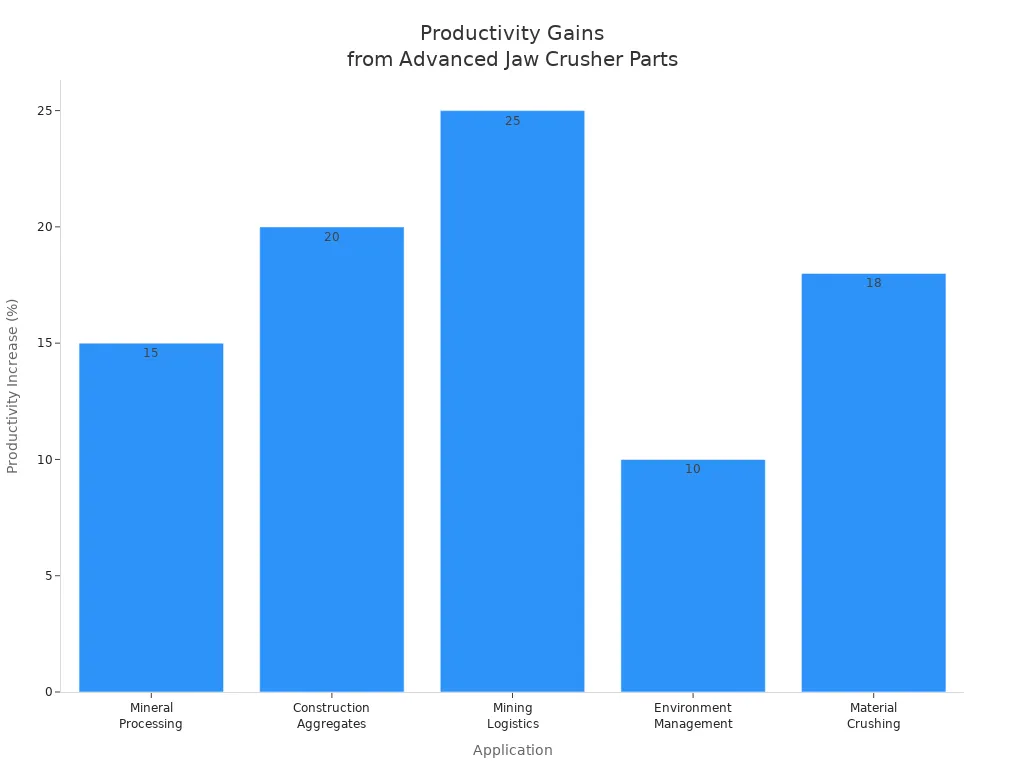
These numbers show that using advanced jaw crusher parts can boost productivity by 10% to 25%. For example, a mining company used smart sensors and automation to monitor their machines in real time. This change cut downtime by 30% and saved up to $500,000 each year. Automatic adjustment systems also let workers control crushers remotely, making operations smoother and more efficient. New wear-resistant materials, like metal matrix composites, help parts last up to three times longer, which means fewer replacements and less lost time.
Tip: Upgrading to energy-efficient designs and variable speed controls can lower power bills and keep operations running at peak performance.
Maintenance Reduction and Equipment Longevity
Switching to high-quality jaw crusher parts does more than just boost productivity. It also cuts down on maintenance and helps equipment last longer. Companies report up to 50% less downtime and 20-40% lower maintenance costs after making the switch. The table below highlights some of these savings:
| Maintenance Metric | Reported Improvement/Reduction |
|---|---|
| Downtime Reduction | Up to 30-50%, with some cases up to 75% |
| Maintenance Cost Savings | 20-40% reduction |
| Wear Life Extension | 2 to 4 times longer |
| Material Saved (Pitman Frame) | 212 kg saved |
| Cost Savings (Pitman Frame) | Approximately $214 saved |
| Material Saved (Flywheel) | 300 kg saved |
| Cost Savings (Flywheel) | Approximately $285 saved |
| Material Saved (Rear Wall) | 166 kg saved |
| Cost Savings (Rear Wall) | Approximately $151 saved |
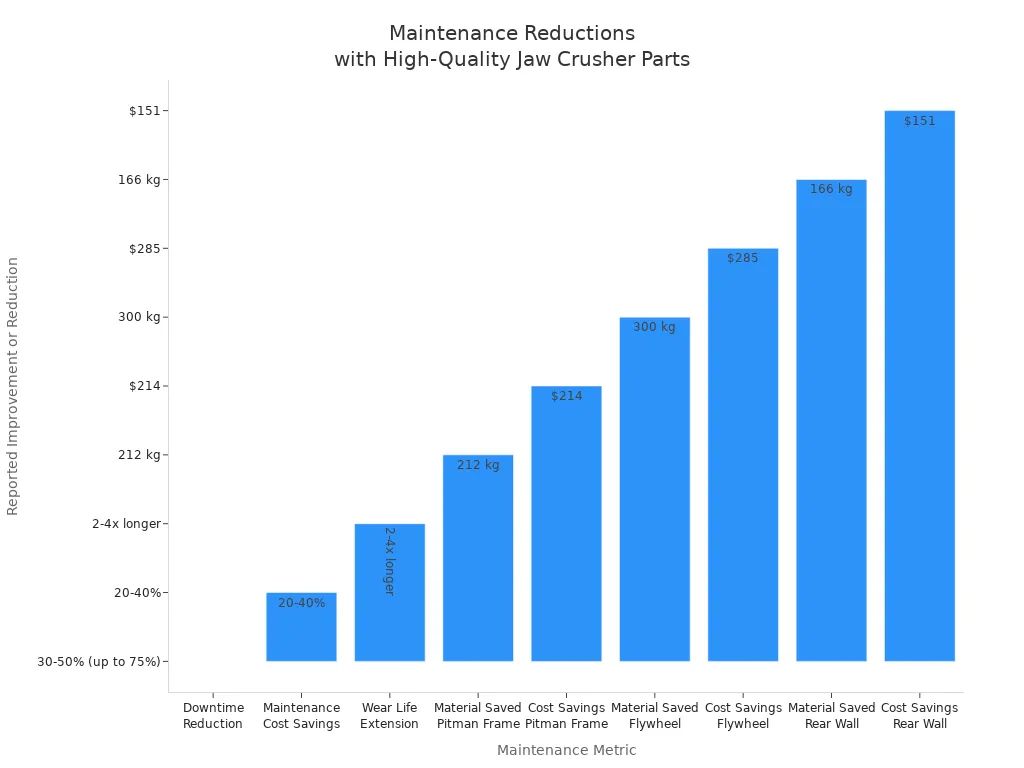
Field data from real operations show that optimized jaw crusher parts, like those in the C6X model, help machines handle bigger rocks and reduce the need for extra crushing steps. Modular designs make it easier to swap out parts, which means less downtime. In places like Southeast Asia and Africa, companies have seen throughput go up by 30% and downtime cut in half. These changes help machines last longer and save energy.
Manufacturers like Metso also point out that using original spare parts and scheduled inspections keeps crushers running smoothly. Professional installation and field services add another layer of protection, making sure every part works as it should. Technical studies even show that redesigning certain parts, like the shaft, can boost crushing efficiency to 95% and make the whole machine more durable.
Note: Investing in better jaw crusher parts means fewer breakdowns, less time spent on repairs, and a longer life for your equipment.
Evaluating and Selecting Jaw Crusher Parts for 2025
Choosing the right jaw crusher parts for 2025 takes careful planning. Companies should look beyond just the price tag and focus on long-term value. Here are some key points to consider:
- Prioritize quality over low price to avoid frequent replacements and keep machines reliable.
- Analyze the total cost of ownership, including hidden costs like downtime and labor.
- Work with trusted suppliers who deliver on time and offer consistent quality.
- Look for suppliers who provide strong after-sales support, including spare parts, technical help, and training.
- Choose parts made from premium materials, such as manganese steel or alloy steel, for longer wear life.
- Consider customization options to match parts to your specific needs.
- Make sure delivery times fit your production schedule to avoid delays.
- Balance initial costs with durability and performance to get the best return on investment.
When evaluating jaw crusher parts, companies often face challenges like picking the right material, finding trained staff, and timing replacements. The shape and design of parts, such as the tooth profile, can affect how evenly they wear and how well the crusher works. Regular inspections and preventive maintenance help catch problems early and keep everything running smoothly.
Best Practice: Set up a maintenance plan with daily, weekly, and monthly checks. Use real-time data from sensors to spot wear patterns and schedule repairs before problems get worse.
Key performance indicators for jaw crusher parts upgrades in 2025 include longer part life, higher throughput, lower maintenance costs, and better energy efficiency. Smart liners with IoT and AI-driven predictive maintenance can cut downtime by up to 30% and boost operational efficiency by 20%. Sustainability also matters, so look for parts that help reduce energy use and emissions.
Selecting the right jaw crusher parts leads to real savings and better efficiency. Companies see longer wear life, lower costs per ton, and higher throughput. In 2025, smart investments matter. Industry trends show that advanced materials and digital tools help businesses stay ahead. Trusted suppliers offer expert support and keep equipment running strong.
FAQ
What is the best way to know when jaw crusher parts need replacing?
Operators should watch for signs like uneven wear, lower output, or strange noises. Regular checks and smart sensors help spot problems early.
Can aftermarket jaw crusher parts match OEM quality?
Some aftermarket parts offer great quality. He should check reviews, material specs, and supplier reputation before buying. Trusted suppliers often match or beat OEM standards.
How do smart jaw crusher parts help with ROI?
Smart parts use sensors and data. They let teams track wear, plan maintenance, and avoid breakdowns. This keeps machines running longer and saves money.
Post time: Jul-11-2025